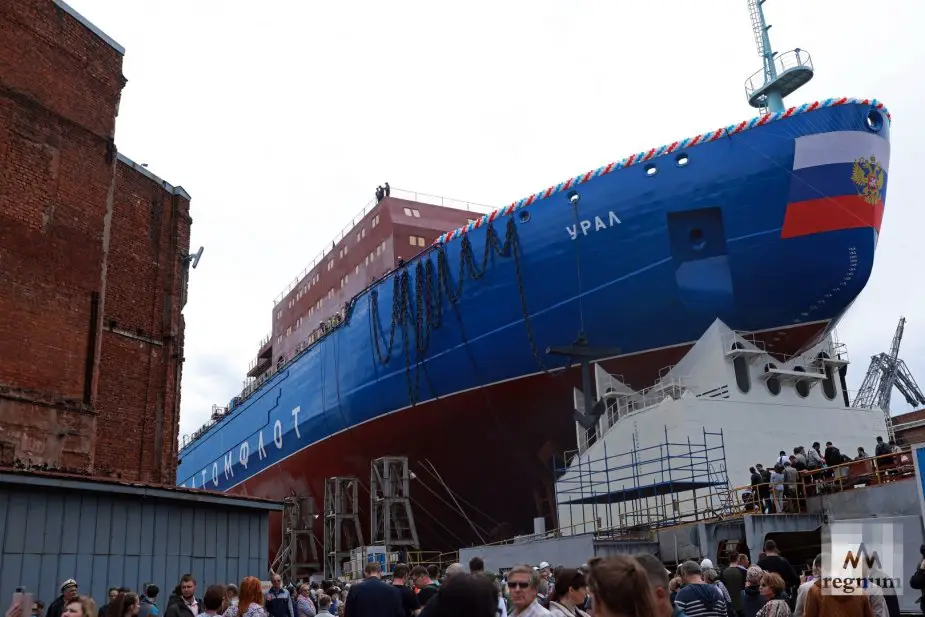According to information published by Tass on July 27, 2022, the second serial Project 22220 nuclear-powered icebreaker Ural has been painted and is ready to continue its dock and shipbuilders sea trials.
Follow Navy Recognition on Google News at this link
 Russian Project 22220 nuclear-powered icebreaker Ural (Picture source: Regnum)
Russian Project 22220 nuclear-powered icebreaker Ural (Picture source: Regnum)
The painting work took two months. The exterior of the icebreaker will retain its bright color in the Arctic climate due to the chemical composition of the special polyurethane paint, the press office specified. The paint delivered to the plant under the import substitution program is quite easy to prepare and apply, the press office added.
About the Ural icebreaker
Ural is a Russian Project 22220 nuclear-powered icebreaker currently under construction at Baltic Shipyard in Saint Petersburg. She was launched in 2019 and is scheduled to enter service in October 2022.
Ural is 173.3 metres (569 ft) long overall and has a maximum beam of 34 metres (112 ft). Designed to operate efficiently both in shallow Arctic river estuaries as well as along the Northern Sea Route, the draught of the vessel can be varied between about 9 and 10.5 metres (30 and 34 ft) by taking in and discharging ballast water, corresponding to a displacement between 25,540 and 33,530 tonnes (25,140 and 33,000 long tons).
Ural has a nuclear-turbo-electric powertrain. The onboard nuclear power plant consists of two 175 MWt RITM-200 pressurized water reactors fueled by up to 20% enriched Uranium-235[29] and two 36 MWe turbogenerators.
The propulsion system follows the classic polar icebreaker pattern with three 6.2-metre (20 ft) four-bladed propellers driven by 20-megawatt (27,000 hp) electric motors.
With a total propulsion power of 60 megawatts (80,000 hp), Ural is designed to be capable of breaking 2.8 metres (9 ft) thick level ice at a continuous speed of 1.5–2 knots (2.8–3.7 km/h; 1.7–2.3 mph) at full power when operating in deep water at design draught.



